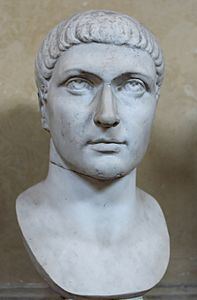Constantinian forces Maxentian forces Date 312 AD | 40,000 100,000 Result Constantinian victory | |
 | ||
Similar Battle of the Hellespont, Battle of Cibalae, Battle of Tzirallum, Battle of Chrysopolis, Battle of the Save | ||
Battle of turin 312
The Battle of Turin was fought in 312 between Roman emperor Constantine and the troops of his rival augustus, Maxentius. Constantine won the battle, giving an impressive display of the tactical skill which was to characterise his whole military career. The campaign ended with his more famous victory at the Milvian Bridge immediately outside Rome.
Contents
Prelude
While Maxentius had fortified in Rome with 100,000 soldiers, Constantine had moved from his portion of the Roman Empire, and crossed the Alps with less than 40,000 veterans at Mont Cenis pass. Constantine faced a first resistance in Segusium (Susa, Italy). He ordered his men to set fire to its gates and scale its walls. Constantine took the town quickly, ordered his troops not to loot the town, and advanced with them into northern Italy.
The battle
At his approach, from the west, to the important city of Augusta Taurinorum (Turin), Constantine encountered a Maxentian army which included an impressive force of heavily armoured cavalry, called clibanarii or cataphractarii in the ancient sources. In the ensuing battle Constantine extended the frontage of his battle line, allowing Maxentius' cavalry to ride into the middle of his array. As his army outflanked that of the enemy, Constantine's more lightly armoured and mobile cavalry were able to charge in on the exposed flanks of the Maxentian cataphracts. Constantine's cavalry were equipped with iron-tipped clubs, ideal weapons for dealing with heavily armoured foes. Some Maxentian cavalrymen were unhorsed, while many others were variously incapacitated by the blows of clubs. Constantine then commanded his foot soldiers to advance against the surviving Maxentian infantry, cutting them down as they fled. Victory, the panegyrist who speaks of the events declares, came easily. The people of Turin refused to give refuge to the retreating forces of Maxentius, and closed the city gates against them. The citizens reportedly cheered Constantine's troops as they slaughtered those of Maxentius' soldiers trapped against the city walls. Following the battle Constantine entered the city to the acclamations of its populace. Other cities of the north Italian plain, recognising Constantine's military genius and his favourable treatment of the civil population, sent him embassies of congratulation for his victory.
Aftermath
The victory at Turin opened Italy to Constantine. He moved on to Milan, where he was met with open gates and jubilant rejoicing. He resided there until the middle of the summer of 312 before moving on. He routed an enemy cavalry force camped near Brescia, and later won a major battle at Verona, where Maxentius' most senior general, Ruricius Pompeianus, was killed. After Maxentian resistance in the northern Italy had been overcome, Constantine marched on Rome, where he defeated and killed Maxentius at the Battle of the Milvian Bridge.
